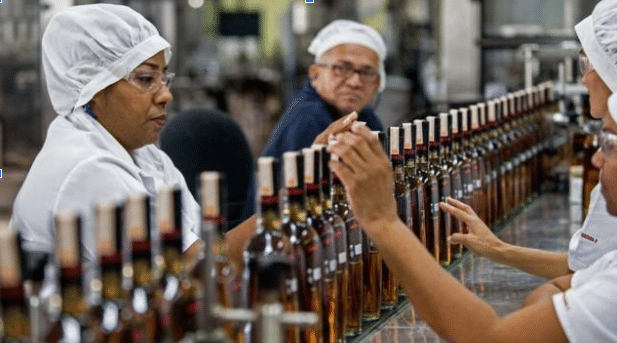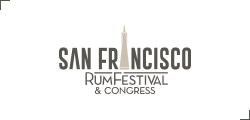Business Opportunities in the Rum Industry: Tips and analysis on the most lucrative business opportunities in the rum sector

In recent years, the rum industry has undergone a remarkable evolution, transforming from simply a traditional beverage in sugarcane-producing regions to a global phenomenon that captures the attention of consumers and entrepreneurs alike. This metamorphosis has not only been driven by the increase in demand for premium and artisanal rums, but also by the continuous innovation in the production and marketing of this venerable beverage.
Competition in this market has intensified, driving industry players to constantly seek new business opportunities, from creating unique products to exploring emerging markets. In this context, the ability to identify and capitalize on these opportunities is not only crucial to success, but can also determine a brand’s survival in an increasingly saturated commercial landscape.
My name is Camilo, and I am a digital content writer for TheRumLab. My goal in this article is to provide detailed guidance on the most lucrative business opportunities in the rum sector, both for startups looking to enter the market and for established brands looking to expand their presence and increase their market share. Through in-depth analysis and practical advice, I will showcase the emerging and established trends that are shaping the future of the rum industry, offering the tools and knowledge needed to succeed in this field.
Historical and Current Context of the Rum Market
The history of rum is intrinsically linked to that of maritime exploration, colonialism, and global trade, dating back to the 17th century, when it began to be distilled on sugar cane plantations in the Caribbean. This spirit quickly became a bargaining chip, an economic mainstay for the colonies, and subsequently a culturally significant element in various parts of the world. Over time, rum evolved from being a drink of sailors and slaves to a variety of spirits appreciated in all social strata, noted for its diversity and complexity.
Today, the rum market reflects a dynamic and constantly evolving industry. A more knowledgeable and discerning consumer looking for quality, authenticity, and a unique story behind each bottle has significantly increased the demand for premium rums. Distilleries have responded to this trend with innovations in aging, fermentation, and blending, introducing products that challenge traditional perceptions of rum.
Current trends also point to an increase in experimentation with flavors and finishes, as well as a growing interest in sustainability and ethical production practices. The emergence of artisanal rums and small productions has further enriched the landscape, offering consumers a wide range of sensory experiences.
The impact of the COVID-19 pandemic on the rum industry has been significant and multifaceted. On the one hand, the closure of bars and restaurants dealt a severe blow to sales in the hospitality channel. On the other hand, there was an increase in domestic consumption and online sales, which drove many brands to improve their digital presence and adapt their marketing strategies. This period has also seen an increase in brand creativity, from conducting virtual tastings to launching new products designed to capture consumer interest in a post-pandemic world.
The rum market is at a tipping point, where tradition meets innovation. Brands that manage to balance these two aspects, respecting rum’s rich legacy while adapting to changing consumer demands, are well positioned to capitalize on emerging opportunities. The pandemic, despite its challenges, has offered an opportunity for reinvention and accelerated changes that are likely to have a lasting impact on the industry.
Opportunities in Rum Production and Distribution
The growing demand for premium and artisanal rums reflects a broader trend towards mindful consumption and appreciation of unique, high-quality products in the spirits industry. This change in consumer preferences offers a significant opportunity for artisanal distilleries, which can be differentiated not only by the quality of their product but also by their history, sustainable production processes, and the authenticity of their brand.
Inclusion of Non-Producing Brands and Independent Bottlers in the Rum Industry
A crucial facet of the rum industry that deserves special attention is non-producing brands and independent bottlers. Unlike traditional distilleries, these entities focus on selecting, sometimes blending, and marketing rums without directly participating in their production. This business modality presents a unique set of challenges and opportunities, significantly contributing to innovation and diversity in the rum market.
Challenges and Opportunities for Non-Producing Brands
Non-producing brands face particular challenges, such as establishing strong relationships with distilleries to ensure quality supplies and creating a brand narrative that resonates with consumers without having the “background” of a distillation process of their own. However, these brands offer a window into rum diversity by selecting and highlighting rums from various regions, styles, and aging processes. They often lead the way in innovation, bringing unique blends and unexplored flavor profiles to market.
The Role of Independent Bottlers
Independent bottlers, meanwhile, play a critical role in preserving and celebrating rum’s history and complexity. Frequently, these players seek out rare or limited-edition rums, offering consumers the opportunity to experience beverages that would otherwise be inaccessible. Not only must these bottlers navigate the challenge of building an attractive brand without a distillation process, but they must also ensure the integrity and authenticity of the rums they select, while maintaining a commitment to quality and transparency.
Contribution to Innovation and Diversity
Through their efforts to offer unique products and creative marketing strategies, both non-producing brands and independent bottlers enrich the rum landscape. They facilitate access to a wider variety of rums, from hidden gems to contemporary innovations, and play a crucial role in educating consumers about the richness and diversity of rum. Its focus on curating and storytelling offers an additional dimension to the enjoyment of rum, promoting a deeper appreciation of this spirit drink globally.
Attraction to Craftsmanship
The appeal of artisanal rums lies in their ability to deliver unique experiences to consumers. These rums are often the result of distinctive production methods, legacy recipes, or innovations in aging and blending. Transparency in the production process and the story behind each bottle also play a crucial role in connecting with consumers looking for products with character and a compelling narrative.
Strategies for New Startups in the Rum Industry
The rum industry offers fertile ground for both new distilleries and non-producing brands, each with its own challenges and opportunities. The key to success lies in the ability to differentiate yourself in a competitive market through quality, authenticity, and innovation in marketing and branding.
For New Distilleries
Prioritizing product quality is critical. This includes the careful selection of the raw material, the adoption of distillation techniques ranging from traditional to innovative, and the aging of rum in optimal conditions to develop a unique flavor profile.
– History and Authenticity: Building a strong, authentic brand is vital. Telling the story of the distillery, its beginnings, challenges overcome, and the philosophy behind the production can strengthen the emotional bond with the consumer.
– Innovation and Sustainability: Exploring new barrels for aging, unusual sugarcane varieties, and sustainable production practices can differentiate a distillery in the market.
– Digital Marketing: A solid presence on social networks and online platforms is essential to reach a global audience, interact with consumers, and build a community around the brand.
For Non-Producing Startups
Non-producing brands, which select and sometimes mix rums without directly participating in their production, must focus on curation and brand narrative to stand out.
– Curation and Collaboration: Establish strong relationships with distilleries to ensure quality supplies and create exclusive products, highlighting the synergy between the brand and the distilleries.
– Branding and History: Develop a brand narrative that communicates the unique selection, vision, and values of the brand. Use digital marketing to tell this story and connect with consumers.
– Innovation in Marketing: Implement creative marketing strategies, such as collaborations with influencers, limited editions, and exclusive events, to generate interest and visibility.
For both
– Differentiation: Whether through product quality, the authenticity of the brand story, or innovation in aging and flavoring, differentiation is key to capturing attention in the saturated rum market.
– Technology Adoption: Leverage digital tools and social media platforms to build and promote the brand, collect consumer feedback, and foster a loyal community.
New distilleries and non-producing brands have the potential to greatly enrich the rum landscape through innovation, quality, and authenticity. By adhering to these principles and taking advantage of the unique opportunities of their respective business models, they can not only meet the expectations of modern consumers but also exceed them, establishing themselves as leaders in the rum sector.
Markets
Expanding into new markets represents a formidable opportunity for both established and emerging/non-established rum brands. Although resources and expertise differ between these two types of entities, cultural adaptation and a well-thought-out marketing strategy are crucial for both as they enter new geographical horizons.
For Established Brands
– Resource Advantage: Brands with an already established presence in the market have the advantage of significant resources and a wealth of experience to explore and penetrate new markets. This allows them to conduct in-depth market research, tailor their products and marketing strategies to local preferences, and execute go-to-market campaigns with scale and reach that can be challenging for new brands.
– Strategic Alliances: Forming alliances with local distributors, actively participating in international fairs and events, and seeking collaborations with brands from other industries are key tactics that can facilitate entry into new markets, leveraging existing infrastructure and local market knowledge.
For Emerging or Unestablished Brands
– Adaptation and Agility: Emerging brands, although they may lack the resources of large established brands, often have greater agility to adapt to the specific cultural needs and preferences of new markets. This may include adapting rum flavors, packaging design, or communication strategies to resonate more deeply with local consumers.
– Creative Marketing Strategies: For non-established brands, digital marketing strategies and smart use of social media can be particularly effective in building brand recognition in new markets. Marketing campaigns should focus on telling the unique story of the brand and its products, using engaging visual content and collaborations with local influencers to generate interest and connect emotionally with the target audience.
– Collaborations and Local Networks: Establishing partnerships with local businesses, such as bars, restaurants, and specialty stores, can offer emerging brands a foothold in new markets. Participating in local tasting events and food and beverage fairs can also increase visibility and encourage product testing among local consumers.
Effective Marketing and Distribution Strategies for Emerging and Established Brands
In the dynamic rum market, both new and established brands must employ innovative marketing and distribution strategies to stand out, attract, and retain consumers. Adaptation and creativity in these strategies are critical to capturing attention in a saturated market.
Ads By Make New
– Establishing a Strong Digital Presence: In the digital age, having a strong online presence is crucial. New brands must leverage social media and digital marketing to tell their story, share the process behind their products, and build a community. Using engaging visual content, such as high-quality videos and photographs, can increase brand engagement and recognition.
– Creative Content Strategies: Creating content that educates consumers about rum, from its history and production process to tasting and pairing suggestions, can position the brand as an authority on the subject. Blogs, social media posts, and webinars are great platforms for sharing this type of content.
– Creative and Direct-to-Consumer Distribution: Exploring innovative distribution channels can be especially effective for emerging brands. Direct-to-consumer selling through websites, online marketplaces, and subscriptions can offer a personalized experience and strengthen the brand-consumer relationship. Participating in local markets, spirit fairs, and tasting events can also increase visibility.
For Established Brands
– Innovation in Digital Marketing: Established brands must continue to innovate in their digital marketing strategies to stay relevant. Interactive campaigns, the use of augmented reality for virtual tasting experiences, and collaborations with influencers can renew interest in the brand and attract new consumers.
– Expansion and Adaptation of Distribution: Adapting distribution strategies to the changing needs of markets and consumers is essential. This may include further integration of online and physical channels, adaptation of logistics to improve efficiency and sustainability, and exploration of new international markets through strategic partnerships.
– Participation in Prestige Events: Maintaining an active presence in prestigious rum competitions, international spirits fairs, and tasting events is vital. These events not only increase the brand’s visibility but also reinforce its reputation for quality and excellence among consumers and industry professionals.
They are unique products
Launching flavored rums and special editions allows brands to explore creative combinations and deliver something distinct and exciting to consumers. These products often incorporate local or exotic ingredients, innovative aging techniques, or collaborations with producers of other types of beverages to create unique flavor profiles. The goal is to create rums that are not only enjoyable on their own, but also add complexity and depth to cocktails and blends.
Market Niches
The key to success in launching these innovative products lies in identifying and understanding market niches. This can include rum aficionados looking for premium tasting experiences, consumers interested in artisanal and authentic products, or those who want to experiment with bold new flavors. By targeting these specific segments, brands can create products that resonate deeply with their consumers’ desires and expectations.
The Importance of Authenticity and Quality in the Rum Industry
In a market where consumers are increasingly looking for genuine experiences and high quality products, authenticity and quality become cornerstones for the success and differentiation of rum brands. These elements, reinforced by transparency throughout the production and marketing process, are essential to cultivate consumer trust and loyalty.
Transparency and Authenticity
Transparency about the origin of ingredients, production methods, and the history behind each bottle of rum is critical to building an authentic brand. Modern consumers value knowing the journey of the product, from the field to the glass. This knowledge not only satisfies their curiosity but also assures them that they are investing in a product that is worthwhile, both for its quality and for the values it represents.
Authenticity is especially evident in rums that incorporate local flavors or traditions. A brand’s ability to communicate and celebrate its connection to local culture and geography can be a powerful differentiator. These authentic stories and respect for distilling traditions resonate deeply with consumers, strengthening emotional connection and fostering brand loyalty.
Commitment to Quality
Quality is a prerequisite that consumers are not willing to negotiate. In a world flooded with information, consumers are better informed and more demanding than ever. They recognize and look for products that stand out for their superiority, from the selection of raw materials to the care taken in bottling. An unwavering commitment to quality at every stage of production ensures that the final product not only meets but exceeds expectations, thus setting a standard of excellence that contributes to the brand’s reputation.
Responsible innovation
Innovation in creating flavored rums and special editions plays a crucial role in capturing market attention. However, this innovation must be done in a way that does not compromise the authenticity or quality of the product. Incorporating quality ingredients, exploring tradition-friendly distillation and aging techniques, and maintaining rigorous transparency about these processes are critical to ensuring that innovations are both valued and respected.
Sustainability as an Added Value
The integration of sustainable practices and organic production reflects not only a commitment to product quality but also to the health of the planet and the well-being of local communities. These practices, openly communicated to consumers, not only improve brand efficiency and reputation but also respond to growing consumer demand for products that are responsible and environmentally friendly.
The importance of Certification in the Rum Industry
Adopting sustainable practices and obtaining reputable certifications are transforming the rum industry, offering distilleries a way to stand out in an increasingly conscious and demanding market. These commitments not only reflect an environmental and social responsibility but also serve as an indication of the quality and authenticity of the products offered. We will use “Organic and Sustainable Certification” as an example.
Organic certification
Obtaining the “organic certification” is more than a seal; it’s a promise to consumers that the rums they enjoy come from agricultural and production practices that respect the highest environmental and health standards. This certificate guarantees that no pesticides, herbicides, or synthetic fertilizers are used in the cultivation of sugarcane during the production process, as well as ensuring that the fermentation and distillation processes meet rigorous organic standards.
For a distillery to obtain organic certification, it must follow a rigorous set of practices that are audited by certifying bodies. These include:
– Organic cultivation: Sugarcane must be grown without the use of synthetic chemicals, on land that has been treated organically for a specific period.
– Organic Production Processes: From fermentation to distillation and packaging, all processes must comply with organic standards, avoiding contaminants and ensuring product integrity.
– Environmental Management: Implement environmental management systems to ensure the long-term sustainability of the local ecosystem, including the protection of biodiversity and water conservation.
Sustainable certification
Sustainability goes beyond organic certification. It involves energy efficiency practices, sustainable water management, waste reduction, and a commitment to biodiversity. These practices not only minimize the environmental impact of rum production, but can also improve product quality and strengthen the brand’s relationship with its consumers and the local community.
Distilleries that are committed to sustainability and organic production are leading the way to a greener future for the rum industry. This commitment not only meets consumer demand for more responsible and healthier products, but also sets a new standard for excellence and authenticity in rum production.
Brand Building
A strong brand clearly communicates its unique value proposition, which can be the exceptional quality of its rum, its history and heritage, sustainable production practices, or any other attribute that sets it apart. This proposal should resonate with the values and preferences of your target audience.
Developing and maintaining a consistent brand narrative across all consumer touchpoints is vital. This includes packaging, advertising, online content, and customer experience. The brand story must be authentic and engaging, inviting consumers to be a part of it.
Offering an exceptional customer experience, from the moment of purchase to after-sales service, contributes significantly to brand perception. Memorable experiences can turn customers into brand advocates, expanding their reach through word of mouth.
Current Investment Landscape in the Rum Industry
The rum industry is experiencing a renaissance thanks to the growing demand for premium, artisanal rums and constant innovation in flavours and production processes. This renewed interest comes not only from established brands looking to expand their presence into new markets and product categories, but also from innovative startups that capture the imagination with unique and sustainable proposals. The diversity in investment and financing options has expanded, including from private equity and venture capital to crowdfunding and government loans, opening up a range of possibilities for different types of ventures in the rum sector.
Tips for Attracting Investors in the Rum Industry
1. Develop a Detailed Business Plan: Regardless of whether you are a traditional distillery or a non-producing brand, having a solid and realistic business plan is crucial. This plan should provide a clear view of your business model, including market analysis, marketing strategies, sales, financial projections, and a specific use of funds. The clarity and feasibility of the plan are essential to gaining the trust of investors.
2. Demonstrate Deep Market Knowledge: Showing that you have a thorough understanding of the rum market, including current trends, competition, and consumer preferences, is vital. This knowledge must extend to how your product or brand is positioned within that context, whether highlighting handcrafted quality, innovation in flavors, or a commitment to sustainability.
3. Highlight Key Differentiators: Identifying and effectively communicating what makes your brand unique is critical. This could be a proprietary distillation technique, a strong commitment to sustainable practices, or an emotive and authentic brand story. These differentiators should resonate not only with consumers but also with potential investors.
4. Emphasize Business Scalability: Investors look for opportunities that promise growth and scalability. It’s important to present clear strategies for expanding your business, whether it’s entering new markets, developing new product lines, or improving operations to increase efficiency and profitability.
5. Build and Present a Competent Team: A team with experience, complementary skills, and a shared passion for rum can be instrumental in securing investment. Highlight how your team has the capacity and knowledge to lead the company to success, facing challenges and taking advantage of opportunities in the market.
Regulation and Legislation
The laws governing the production, distribution, and sale of rum can be extremely specific to each country or region. This includes licenses to produce and sell alcohol, excise taxes on spirits, product labeling, and advertising restrictions. Companies must be well informed about these regulations in their target markets and have specialized legal advice to navigate these requirements.
The export and import of rum imply compliance with a series of trade and customs regulations. This may include specific tariffs, quotas, and certifications that ensure the product meets the quality and food safety standards of the importing country. With a growing focus on sustainability, companies in the rum sector should also consider environmental regulations. Local and international laws may be able to regulate ecological and sustainable practices, which can have an impact on everything from raw material sourcing to production and packaging processes.
Success Cases
Appleton Estate has implemented several sustainability initiatives, including the reuse of sugarcane bagasse as fuel and the treatment and reuse of water in its processes. These practices not only reduce its environmental footprint but also underscore the brand’s commitment to protecting Jamaica’s rich landscape.
Rhum Clément is known for its focus on sustainability, being one of the first distilleries to receive the “Agriculture Biologique” certification for its organic rum. They use organic farming practices to grow sugarcane, avoiding the use of pesticides and chemical fertilizers, which ensures the protection of their natural environment.
Brugal Rum has invested in sustainable production technologies, including wastewater treatment systems and reforestation programs. Its commitment to sustainability extends beyond production, contributing to community and conservation projects in the Dominican Republic.
Analytics of social and digital networks
Social media platforms are powerful tools for brand positioning, allowing rum companies to interact directly with their followers, share relevant content, and promote their products in creative and personalized ways.
Creating valuable and engaging content that educates and inspires the audience is essential. This can include stories behind rum production, tips for tastings and pairings, and highlighting rum culture and tradition.
Investing in search engine optimization (SEO) and search engine marketing (SEM) strategies can significantly increase a rum brand’s online visibility, attracting qualified traffic to your website and social platforms.
Strategic Partnerships and Collaborations
Forming partnerships with brands that share similar values or audiences can be beneficial. These collaborations can range from joint limited editions to shared events and marketing campaigns, broadening the reach of both brands.
Participating in industry events, such as spirits fairs and rum festivals, or sponsoring cultural and social events, can increase brand visibility and reinforce your market positioning.
Collaborating with influencers and rum industry experts who already have an established audience can be an effective way to reach new consumers and build credibility.
An effective marketing and branding strategy in the rum industry requires a combination of authenticity, creativity, and adaptability. By building a strong brand, leveraging digital platforms, and forming strategic alliances, companies can expand their reach, connect with their audience in meaningful ways, and secure a competitive position in the marketplace.
The rum industry, with its rich heritage and growing popularity in the global market, presents numerous opportunities for investors and entrepreneurs. However, navigating the financial landscape of this sector requires a clear understanding of its current trends as well as effective strategies to attract investment and financing.
Financing Options
1. Private Equity and Venture Capital
These are options for companies at different stages, from startups to established brands looking to expand. Attracting these investors requires demonstrating significant growth potential and solid plans for return on investment.
Crowdfunding
Crowdfunding platforms allow startups to raise capital through small investments from a large number of people. This option not only provides funding, but can also help validate the business concept and build a loyal fan base.
3. Bank and Government Loans
Traditional loans can be suitable for businesses with proven models and clear financing needs. Specific government initiatives for small businesses or the agricultural and industrial sectors can also offer favorable conditions.
4. Angel Investment
Angel investors, typically wealthy individuals interested in supporting early-stage startups, can offer capital in exchange for a stake in the company. Often, they also bring valuable experience and networks.
The rum sector offers multiple opportunities for investment and financing, but success in attracting capital depends on a combination of meticulous preparation, clear strategy, and effective communication. Showing a deep understanding of the market, coupled with a differentiated and scalable business proposition, is essential to capture investor interest and secure the funding needed to grow and thrive in the rum industry.
The rum industry, like any global spirits sector, faces a complex web of regulations and legal challenges that vary significantly from market to market. Understanding and complying with these regulations is critical to operating successfully and expanding internationally. In addition, brand protection and intellectual property are crucial aspects that companies must carefully manage to safeguard their reputation, products, and competitiveness in the market.
Protection of Intellectual Property
Registering the brand in each relevant market is vital to protecting a company’s identity and assets. This not only prevents unauthorized use of the trademark, but also offers legal protection in cases of infringement or imitation.
For unique aspects of rum production, such as innovative distillation methods or special recipes, obtaining copyrights or patents can offer an additional layer of protection. This ensures that innovations that distinguish a brand are legally recognized as the company’s intellectual property.
The rum market is not immune to the problems of counterfeiting and product piracy. Companies should be proactive in monitoring the market and taking legal action when necessary to protect their products and consumers. This may include working with customs and local authorities to identify and stop the distribution of counterfeit goods.
When forming alliances, hiring employees, or working with distributors, it is prudent to implement confidentiality and non-compete agreements to protect trade secrets and intellectual property.
Keeping up with regulations and legislation in the rum industry, as well as ensuring effective brand and intellectual property protection, requires a well-defined legal strategy and an ongoing commitment to compliance. Successful companies in this sector not only understand these challenges as barriers, but also as opportunities to differentiate themselves and reinforce their reputation and brand value in the global market.
Analyzing success and failure stories within the rum industry provides valuable lessons for entrepreneurs and established brands. Below are two representative cases that illustrate important lessons and offer practical tips for navigating the rum market.
Success Story: Ron Zacapa
Rum Zacapa, originally from Guatemala, has established itself as one of the most recognized premium rum brands worldwide. Its success is largely due to its unique method of aging, known as the “Solera System”, carried out at high altitude in the mountains of Guatemala, which gives rum its distinctive flavor and quality.
Elements of Success
– Product Innovation: The introduction of unique aging techniques and the use of high-quality local ingredients have positioned Ron Zacapa above its competitors.
– Branding and Marketing: The brand has been able to tell its story and highlight the authenticity and legacy of its product, emotionally connecting with consumers.
– International Expansion: Zacapa has implemented effective strategies to enter international markets, positioning itself as a luxury rum.
Lessons Learned:
– Quality and innovation in the product are fundamental to differentiate yourself in a saturated market.
– Effective and authentic storytelling can significantly strengthen the brand.
– Patience and long-term strategy are key to success in international expansion.
Failure Case: Pale Rum (Fictional Case)
“Pale Rum” was a brand that tried to enter the premium rum market with a value proposition focused on an innovative distillation process. Despite significant initial investment and a well-designed marketing campaign, the brand failed to capture consumer attention and eventually withdrew from the market.
Key failure factors
– Lack of Differentiation: Despite its innovation in the distillation process, Rum Pale failed to differentiate itself sufficiently from other products in the premium segment.
– Disconnect with the Target Market: The brand did not fully understand the preferences of its target market, resulting in a value proposition that did not resonate with consumers.
– Pricing Strategy: Its pricing strategy did not align with the consumer’s perception of the product’s value.
Lessons Learned:
– Deeply understanding the target consumer is crucial before launching a product into the market.
– Differentiation must be meaningful and valued by the consumer.
– The pricing strategy should reflect the perceived value of the product.
Practical Tips from Entrepreneurs and Experts
– Continuous Market Research: Keeping abreast of market trends and consumer preferences is essential to continuously adapt and innovate.
– Flexibility and Adaptability: Be willing to adjust business strategy in response to market feedback and operational challenges.
– Focus on Quality: Never compromise quality for growth or expansion; brand reputation depends on product consistency and excellence.
– Relationship Building: Developing strong relationships with distributors, retailers and consumers can be a determining factor for success.
These case studies underscore the importance of innovation, market understanding, and an effective brand strategy. Lessons learned from these examples can guide entrepreneurs and brands in their efforts to succeed in the competitive rum industry.
Conclusion
Throughout this analysis, we have explored various facets of the rum industry, highlighting key business opportunities and offering a detailed view of the strategies that can lead to success in this vibrant and competitive sector. From the growing demand for premium and artisanal rums to the importance of sustainable practices and innovation in production, it is clear that the rum market is full of potential for new and established brands.
Artisanal distilleries have a unique opportunity to capture niche markets through authenticity, exceptional quality and a commitment to sustainability. For established brands, product innovation and expansion into new markets represent crucial strategies to maintain relevance and growth. Digitization and the effective use of social networks have proven to be indispensable tools for brand positioning and building relationships with consumers.
Strategic collaborations and partnerships, along with a strong branding strategy, are critical to expanding market reach and strengthening brand presence. Meanwhile, the investment and financing landscape in the rum industry offers multiple avenues for business development and expansion, as long as clear and differentiated value propositions are presented.
Navigating regulatory complexities and protecting intellectual property are critical aspects that require detailed attention to ensure long-term success and sustainability. The case studies analyzed provide valuable lessons on the importance of differentiation, deep understanding of the target market, and adaptability to challenges.
The rum industry is at an exciting crossroads, where tradition meets innovation, and quality and authenticity have never been more valued. To succeed in this sector, brands must prioritize continuous innovation, maintain an unwavering commitment to quality, and develop brand strategies that authentically resonate with consumers. In doing so, they not only made sure to capture current opportunities, but they will also be well positioned to lead future trends in the rum industry.
I would like to express my special thanks to Dan DeHart for his corrections and valuable contributions, which have been essential in enriching and refining this analysis, ensuring that our exploration of the rum industry is as complete and accurate as possible.
Sources
1. The IWSR (International Wine & Spirits Research)
2. Euromonitor International.
3. Statista.
4. The Spirits Business:
5. Drinks International:
6. Beverage Industry:
7. WIRSPA (West Indies Rum & Spirits Producers’ Association Inc.)
8. Distilled Spirits Council of the United States (DISCUS)
9. Google Scholar
11. The Rum Lab
12. Ministry of Rum
About The Author
Camilo is an audiovisual communicator with over 15 years of experience. He resides in Caracas, Venezuela, and has studied film and television, acquiring skills in writing film scripts. He currently works as a Digital Content Manager at TRL. If you would like to see his portfolio, you can visit his website at http://ccesarino.com.














